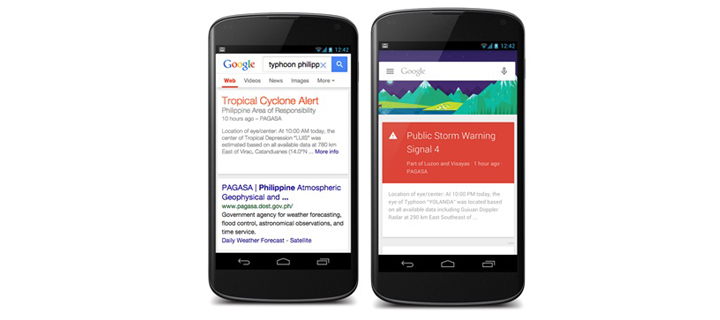The Philippines has long been susceptible to extreme weather patterns, with the resulting natural disasters affecting the lives of millions of Filipinos. This is why Google is launching Public Alerts in the Philippines to make accurate and relevant alerts more accessible during typhoon season.
Google Public Alerts provides official emergency messages to users when relevant. In the Philippines, this includes typhoon warnings on Google Search, Google Maps, and Google Now. The alerts displayed will depend on the given location, severity of the disaster, and search query. The typhoon alerts in the Philippines will also include storm path information. All active alerts can also be accessed through the Google Public Alerts page on www.google.org/publicalerts.

Public Alerts on Google Search and Google Now
“The Philippines is one of the most typhoon-stricken countries in the world, with an average of 20 tropical storms making landfall each year,” said Meryl Stone, Head of Partnerships for Google Crisis Response. “By making crisis information readily available through online tools people commonly use, we hope to help those at risk to act more promptly and mitigate disaster impact.”

Google is able to provide Public Alerts in the Philippines thanks to the Philippine Atmospheric, Geophysical and Astronomical Services Administration (PAGASA). Their commitment to providing information to the public enables Google and others to make critical and life-saving notifications more widely available.
Public Alerts is part of Google Crisis Response, which seeks to make critical information more accessible around natural disasters and humanitarian crises. Tools include Person Finder, a platform for individuals and organizations to let people know who they’re looking for and to enter updates about missing persons, and Crisis Map, which puts critical disaster-related geographic data in context. Crisis Maps include information like shelter and hospital locations, flood hazard zones, rainfall forecast radars, evacuation routes and more, depending on the area.

